

Hide/Show
8:30 a.m.–9:00 a.m. | Track: General
Joe Buhain, EdD, RRT, NREMT B, FAARC
Wadie Williams, MS, RRT, FAARC
Harry Roman, MA, RRT, FAARC
Michael de Peralta, MBA-HCM, RRT
Show description
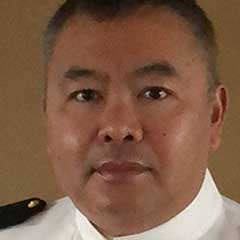
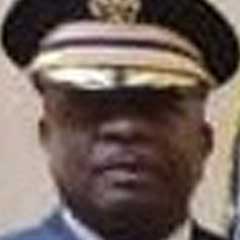
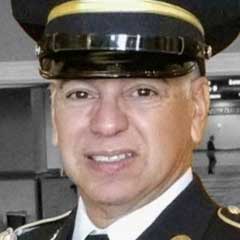
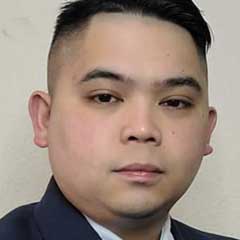
An AARC tradition like no other, attend the AARC Flag Folding Ceremony and celebrate the rich tradition of the U.S. Military and Armed Forces. RT veterans and active-duty respiratory therapists conduct a moving ceremony as we recognize those who serve, those who have served, and those we have lost.
9:00 a.m.–11:30 a.m. | Track: General
Show description
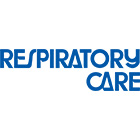
Researchers present the result of their work using a short PowerPoint presentation, followed by questions from the attendees.
Supported by an unrestricted educational grant from
9:10 a.m.–9:45 a.m. | Track: Sleep | CRCE: 0.58
Lutana Haan, EdD, RRT
Show description

The body of evidence of the relationship between COVID and sleep continues to grow, and this interactive discussion will review some of the emerging research on this subject. It will focus on the effect for the individual, health and wellbeing, and our society.
9:10 a.m.–9:45 a.m. | Track: Adult Acute Care | CRCE: 0.58
PRO: Neil MacIntyre, MD, FAARC
CON: Eddy Fan, MD, PhD
Show description
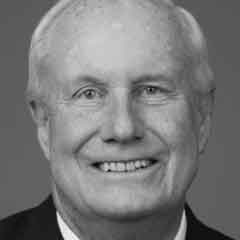

Setting PEEP remains one of the most contentious aspects of mechanical ventilation. PEEP has been titrated by shunt, fall in cardiac output, PaO2, SpO2, and compliance. Development of the PEEP/FIO2 tables for the ARDSnetwork were based on expert opinion. Join this spirited debate to hear from two experts in mechanical ventilation debate the best way to set PEEP.
9:10 a.m.–10:30 a.m. | Track: Ambulatory & Post-Acute Care
9:10 a.m.–9:45 a.m. | CRCE: 0.58
Timothy Buckley, MSc, RRT, FAARC
Show description
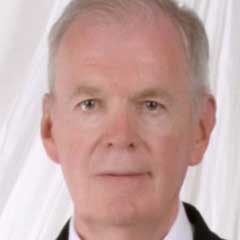
This session will discuss the discharge process from the perspective of the respiratory therapist. Identification of the gaps that exist in this process will be followed by a discussion of those processes that are essential to create an effective discharge plan. Recommendations to help eliminate these gaps will be made.
9:55 a.m.–10:30 a.m. | CRCE: 0.58
Vrati Doshi, MSc, RRT
Show description

Many complex respiratory patients are discharged to an LTACH or SNF before going home. This increased level of care and support increasingly requires the expertise of respiratory therapists to be successful. The speaker will highlight the type of patient that benefits from subacute care and the role played by respiratory therapists. Further, the speaker will discuss the planning process involved in transition to home from the subacute, again highlighting best practices across the country.
9:10 a.m.–9:45 a.m. | Track: Neonatal/Pediatrics | CRCE: 0.58
Andrew Miller, MSc, RRT, RRT-ACCS, RRT-NPS, FAARC
Show description
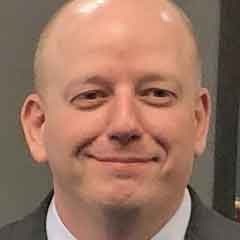
Asthma is a common reason for hospital admission and is one of the leading causes of pediatric ICU admission. Patients are often treated with noninvasive interventions such as heliox, high-flow nasal cannula and noninvasive ventilation. This lecture will discuss the pathophysiology of critical pediatric asthma, the physiologic rationale for noninvasive respiratory support, and review the evidence for noninvasive interventions in critical pediatric asthma. The how, why, and when for each modality will be discussed.
9:10 a.m.–11:15 a.m. | Track: Student
9:10 a.m.–9:45 a.m. | CRCE: 0.00
Dana Evans, MHA, RRT, RRT-NPS, FACHE
Show description

This presentation will focus on preparing the respiratory care student to transition into professional life as a respiratory therapist. The presenter will discuss demonstrating professionalism in student environments (clinical rotations, professional meetings, etc.), applying and interviewing for a job, and maintaining professionalism after graduation.
9:55 a.m.–10:30 a.m. | CRCE: 0.00
Bill Galvin, MSEd, RRT, AE-C, FAARC
Show description
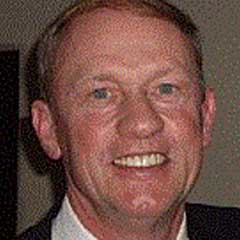
The presentation will address the factors that make for success in the examination process. It will cover preparatory issues and what you will experience onsite as well as test-taking strategies and techniques. Emphasis will be placed on the NBRC Therapist Multiple-Choice Examination (TMC).
10:40 a.m.–11:15 a.m. | CRCE: 0.00
Bill Galvin, MSEd, RRT, AE-C, FAARC
Show description

This presentation will serve as a sequel to the previous one and will address the factors that make for success on the Clinical Simulation Examination. It will cover such issues as exam content, structure, and unique strategies for progressing through a branching logic type of exam. It will also highlight recent changes in policy.
9:55 a.m.–10:30 a.m. | Track: Sleep | CRCE: 0.58
Jessica Schweller, MS, RRT, RRT-SDS, APRN-CNP
Show description

Therapy for OSA primarily revolves around PAP therapy. Given the recent events with equipment availability, other strategies for management are being used more frequently. This discussion will include other treatment options for a patient with sleep disordered breathing including oral appliance, nasal appliance, positional, neuromuscular stimulation, surgical, and medical therapies.
9:55 a.m.–10:30 a.m. | Track: Adult Acute Care | CRCE: 0.58
Rich Branson, MSc, RRT, FAARC
Show description
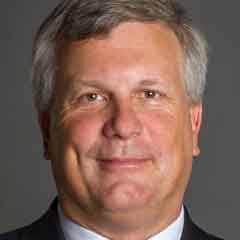
Ventilator associated pneumonia and ventilator associated events remain important issues in respiratory care. The guidelines for prevention of VAP/VAE and non-ventilator associated pneumonia are living documents that are updated every few years. While delayed by COVID, new guidelines based on recent publications have recently been published. Changes to oral care, subglottic secretion drainage and use of probiotics are forthcoming. This talk will review the new guidelines and describe what’s in and what’s out.
9:55 a.m.–10:30 a.m. | Track: Neonatal/Pediatrics | CRCE: 0.58
Robinder Khemani, MD, MsCI
Show description

The importance of lung protective ventilation in adults and children has been well described. Unfortunately, lung protective strategies can have an impact on diaphragm contractility and the incidence of Ventilator Induced Diaphragm Dysfunction (VIDD). Ideally, ventilation strategies should focus on balancing protection of both the lung and diaphragm. This presentation will review the evidence related to VIDD and an integrated lung and diaphragm protective approach to mechanical ventilation.
10:00 a.m.–1:30 p.m. | Track: General
10:40 a.m.–11:15 a.m. | Track: Sleep | CRCE: 0.58
Amanda Roby, PhD, RRT, RRT-SDS, RPSGT
Show description

Confusion often exists as to which type of sleep testing is most appropriate to be used for a specific clinical situation. In-laboratory polysomnography, home sleep apnea testing, multiple sleep latency testing, actigraphy, and personal device monitors will be discussed in this session. A case-based approach will be used to help develop recommendations for the right test for the right person.
10:40 a.m.–11:15 a.m. | Track: Adult Acute Care | CRCE: 0.58
Michael Lipnick, MD
Show description

How hypoxic is too hypoxic? Is hyperoxia something RTs should be concerned about? Is normoxia always best? This session will cover important concepts that relate to oxygen delivery and blood oxygen levels that are physiologically and clinically important.
10:40 a.m.–11:15 a.m. | Track: Neonatal/Pediatrics | CRCE: 0.58
Martin Kneyber, MD, PhD, FCCM
Show description

High-frequency oscillatory ventilation (HFOV) is frequently used in children suffering from acute severe lung injury. From a theoretical perspective, HFOV appears to be a suitable mode for lung-protective ventilation (LPV), and its use has, therefore, been recommended by the Pediatric Mechanical Ventilation Consensus Conference (PEMVECC) and the Pediatric Acute Lung Injury Consensus Conference (PALICC). This lecture will discuss in detail the pediatric and adult data on HFOV and how the current use of HFOV relates to setting the oscillator in an optimal fashion. In particular, setting frequency and finding the optimal mean airway pressure will be discussed by reviewing experimental and pre-clinical studies. A physiologic approach to HFOV is going to be presented, discussing the rationales for this physiology driven approach. First pediatric clinical data on the physiology driven approach will be discussed. The attendees will gain insight into a different, personalized setting and titration of HFOV.
10:40 a.m.–12:00 p.m. | Track: Clinical Practice
10:40 a.m.–11:15 a.m. | CRCE: 0.58
Linda Nozart, MPH, BSRC, RRT, AE-C
Show description

The Chronic Care Model and Health Belief Model can be used in underserved populations to improve respiratory disease management. This discussion will focus on key strategies for forming professional partnerships, networking with community-based organizations, and collaborating to create bi-directional referral systems. One such application will discuss the use of Uber in the neighborhoods of North Brooklyn, NY.
11:25 a.m.–12:00 p.m. | CRCE: 0.58
Brady Scott, PhD, RRT, FAARC
Show description
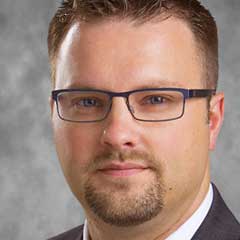
Chronic disease management goals can be met in rural populations, but strategies used to address rural health challenges differ from those used for urban populations. Get a Lyft to the beautiful mountain region of Central Appalachia, specifically Eastern Kentucky, to see how respiratory health disparities are being addressed in a rural population.
11:25 a.m.–12:00 p.m. | Track: Sleep | CRCE: 0.58
Brian Carlin, MD
Show description
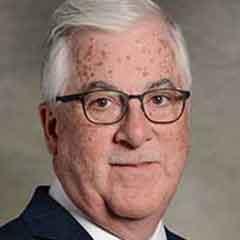
Sleep deprivation is prevalent in both patients and care providers. The deleterious effects of sleep deprivation are many. This discussion will center around sleep deprivation in hospitalized patients as well as those for health care providers (e.g., respiratory therapists). Strategies for the early recognition of sleep deprivation and techniques for prevention will be discussed.
11:25 a.m.–12:00 p.m. | Track: Adult Acute Care | CRCE: 0.58
Danny Theodore, MD
Show description

This lecture will discuss the complex issue of mechanical ventilation for the morbidly obese. Airway and ventilator management, including PEEP titration by imaging and esophageal manometry, will be discussed.
11:25 a.m.–12:00 p.m. | Track: Neonatal/Pediatrics | CRCE: 0.58
Emilee Lamorena, MS, RRT, RRT-NPS
Show description

Conventional mechanical ventilation is still a cornerstone of therapy in many ICUs. However, there are also many other non-conventional forms of mechanical ventilation that have been developed and proposed to help mitigate the risk of ventilator-induced lung injury, while improving hemodynamics and gas exchange in our patients. With so many new technological and medical advances in neonatal/pediatric respiratory care, we have been using and sharing information over the past few years about the benefits and management strategies of these other modes. This presentation will review some popular non-conventional modes of ventilation, and make recommendations for their use in neonatal/pediatric critical care.
11:25 a.m. -12:00 p.m. | Track: Patient Safety | CRCE: 0.58
Krystal Craddock, MSRC, RRT, CCM
Show description

As COVID-19 moved us into digital platforms for care, remote patient monitoring (RPM) has been a tool to help expand the care of our chronic pulmonary patients. In this lecture you will learn all it takes to implement an RPM program for chronic pulmonary diseases that can be monitored by RTs. The UC Davis Health Comprehensive COPD Clinic and COPD Case Management Program Coordinator will share highlights from building the first RPM program at UCD. She will discuss early considerations, key stakeholders needed, and foreseen barriers, as well as questions answered regarding billing aspects, access for patients, and patient outcomes.
12:00 p.m.–1:55 p.m. | Track: Education | CRCE: 1.50
Show description

Researchers present the results of their work. Authors briefly present their findings and engage in an open discussion with the attendees.
Supported by an unrestricted educational grant from
12:00 p.m.–1:55 p.m. | Track: Diagnostics | CRCE: 1.50
Show description

Researchers present the results of their work. Authors briefly present their findings and engage in an open discussion with the attendees.
Supported by an unrestricted educational grant from
12:05 p.m.–12:35 p.m. | Track: General
Timothy Buckley, MSc, RRT, FAARC
Show description

Section members meet to determine their needs and priorities, as well as how to use AARC resources to accomplish them. All Congress attendees, including section non-members, are invited to attend and participate.
1:15 p.m.–1:45 p.m. | Track: General
Ralph Stumbo, RRT, CPFT
Show description

Section members meet to determine their needs and priorities, as well as how to use AARC resources to accomplish them. All Congress attendees, including section non-members, are invited to attend and participate.
1:15 p.m.–1:45 p.m. | Track: General
Amanda Roby, PhD, RRT, RRT-SDS, RPSGT
Show description

Section members meet to determine their needs and priorities, as well as how to use AARC resources to accomplish them. All Congress attendees, including section non-members, are invited to attend and participate.
1:15 p.m.–1:45 p.m. | Track: General
Emilee Lamorena, MS, RRT, RRT-NPS
Show description

Section members meet to determine their needs and priorities, as well as how to use AARC resources to accomplish them. All Congress attendees, including section non-members, are invited to attend and participate.
2:00 p.m.–2:50 p.m. | Track: General, Adult Acute Care | CRCE: 0.83
Robert L. Chatburn, MHHS, RRT-NPS, FAARC
Show description
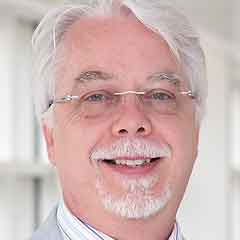
Mechanical ventilation is ubiquitous to intensive care from neonates to adults. The terminology surrounding mechanical ventilation is manufacturer-specific and jargon still prevails. To provide evidence-based mechanical ventilation, clinicians must be able to communicate regarding the operation of mechanical ventilation. Evidence-based treatment requires that the critical care team be lock step chapter and verse, yet ventilator complexities often place the team on different pages and sometimes in different books. This lecture will provide a method of teaching mechanical ventilation terminology and operation based on a set of principles and how we speak about mechanical ventilation in a consistent and meaningful way.
3:00 p.m.–3:35 p.m. | Track: Leadership & Management | CRCE: 0.58
David Wheeler, MEd, RRT, RRT-NPS, FAARC
Show description

Access. This word has been both the driving force and inherent challenge of telehealth since its origin. Telehealth allows clinicians to scale delivery of health care services while simultaneously empowering patients in certain populations to receive the care they need, when they need it, eliminating disparities. Improved outcomes and increased access for all patient populations are some of the key objectives driving telehealth advancement. In this presentation, we will explore the past, present and future of telehealth services and what impact that will have on the respiratory care services moving forward.
3:00 p.m.–3:35 p.m. | Track: Adult Acute Care | CRCE: 0.58
Pro: Thomas Piraino, RRT, FCSRT, FAARC
Con: L. Felipe Damiani, PhD, MSc, PT
Show description
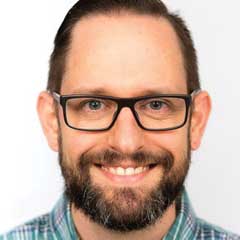
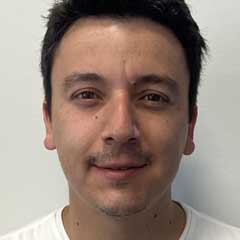
Patient ventilator asynchrony is common in the intensive care unit and has been shown to be associated with worse patient outcomes. Should it be avoided at all costs? Two experts will present data on both sides of the debate.
3:00 p.m.–5:05 p.m. | Track: Pulmonary Function
3:00 p.m.–3:35 p.m. | CRCE: 0.58
Carl Mottram, BA, RRT, RPFT, FAARC
Show description

This presentation will inform the attendees on the essential elements in meeting or exceeding an accrediting body expectation. It will review all aspects of setting up and completing quality control requirements. We will also review outcomes from other QA programs and their methods of implementing QC standards.
3:45 p.m.–4:20 p.m. | CRCE: 0.58
Ellen Becker, PhD, RRT, RPFT, FAARC
Show description

This discussion will review the requirements for quality control as it applies to the pulmonary function laboratory. The terms used in such quality control will be discussed, followed by case studies to review acceptable data. Techniques used for troubleshooting for unacceptable quality control results will be discussed.
4:30 p.m.–5:05 p.m. | CRCE: 0.58
Ellen Moran, MS-RT, RRT, RPFT, AE-C
Show description

The ATS/ERS Spirometry and DLCO standards require several mechanical quality control methods. This presentation describes how to perform the mechanical quality control steps of volume linearity, gas analyzer linearity, and DLCO syringe test. Expected results for each will be discussed.
3:00 p.m.–3:35 p.m. | Track: Ethics | CRCE: 0.58
Kimberly McMahon, MD
Show description

Advances in organ donation have occurred, and more donations are occurring after death by circulatory criteria. This presentation will discuss the history, evolution, and current regulations surrounding organ donation after determination of death by circulatory criteria. Participants will learn about the process of donor selection and preparation, as well as what occurs during and after the donation process. Special attention will be given to the role of the respiratory therapist in these cases, including how it differs from the role in organ donation by brain-dead donors. There will also be a discussion of ethical issues surrounding donation as well as the dead donor rule and the definition of death.
3:00 p.m.–3:35 p.m. | Track: Neonatal/Pediatrics | CRCE: 0.58
Kendra Smith, MD
Show description

There are several neonatal disorders in patients that typically require invasive mechanical in the NICU, including PPHN, MAS, CDH, RDS, and BPD. Each of these diseases presents unique challenges and clinical presentations. This lecture will review disease-specific guidelines for invasive conventional and high frequency ventilation in neonatal patients.
3:10 p.m.–5:05 p.m. | Track: Clinical Practice | CRCE: 1.50
Show description

Researchers present the results of their work. Authors briefly present their findings and engage in an open discussion with the attendees.
Supported by an unrestricted educational grant from
3:10 p.m.–5:05 p.m. | Track: Clinical Practice | CRCE: 1.50
Show description

Researchers present the results of their work. Authors briefly present their findings and engage in an open discussion with the attendees.
Supported by an unrestricted educational grant from
3:45 p.m.–4:20 p.m. | Track: Leadership & Management | CRCE: 0.58
Corey Sillito MSRT, RRT, RRT-ACCS, RRT-NPS
Carrie Winberg MSHA, BSRT, RRT, RRT-ACCS, RRT-NPS
Show description


After COVID and the emergent addition of RTs at the Tele-Critical Care desk, RRT value became front and center. Join these two innovative Tele-Critical Care leaders as they share how they created and “sold” physicians and executive leaders in permanently adding RTs to their team. Discover implementation strategies, monitoring success and marketing the value. They will share job descriptions, the business model and data collection tools.
3:45 p.m.–4:20 p.m. | Track: Adult Acute Care | CRCE: 0.58
Ira Cheifetz, MD, FAARC
Show description
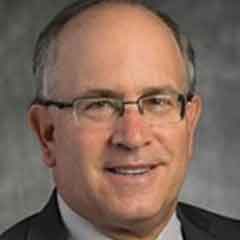
Respiratory therapists that manage mechanical ventilators need to have a keen understanding of physiologic interactions between the respiratory and cardiac system—and how it is altered when mechanical ventilation is initiated. This session reviews the complex interaction between mechanical ventilation and patient hemodynamics.
3:45 p.m.–4:20 p.m. | Track: Neonatal/Pediatrics | CRCE: 0.58
Steven Shein, MD, FCCM
Show description

Bronchiolitis is a common reason for admission to the PICU, often resulting in the need for invasive or non-invasive respiratory support. Despite this, care varies broadly between centers. This presentation will discuss the implications of critical bronchiolitis as well as the current evidence for interventions and support.
3:45 p.m.–4:20 p.m. | Track: Patient Safety | CRCE: 0.58
Lexie Caraway, MBA, RRT, RRT-ACCS, AE-C
Show description

Pressure injuries are costly to hospitals and sadly our patients suffer the consequences of what can often be preventable. This lecture will discuss why respiratory therapists should be striving to add more value to their hospital’s pressure injury teams and why our expertise matters. Thermographic imaging is an added tool which can help provide better patient care as well as elevate the respiratory care profession.
4:30 p.m.–5:05 p.m. | Track: Leadership & Management | CRCE: 0.58
Karsten Roberts, MSc, RRT, RRT-ACCS, FAARC
Show description

Telemedicine is a practice of medicine in which health care providers use telecommunication technologies to deliver health care, diagnosis, and treatment to patients remotely. As the COVID-19 pandemic expanded throughout the world, innovative methods were required to involve respiratory therapists in the care of critically ill patients utilizing telemedicine services. This lecture will discuss the role that the respiratory therapist has in a tele-ICU environment.
4:30 p.m.–5:05 p.m. | Track: Adult Acute Care | CRCE: 0.58
John Davies, MA, RRT, FAARC
Show description
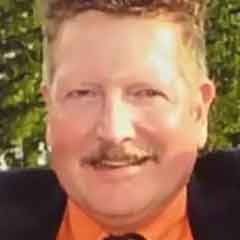
Extracorporeal Carbon Dioxide Removal (ECCO2-R) has been described as a way to support patients who are hypercapnic. What is the evidence to support this practice? The session will discuss the concept of ECCO2-R and current evidence to support its use in patients in hypercapnic respiratory failure.
4:30 p.m.–5:05 p.m. | Track: Neonatal/Pediatrics | CRCE: 0.58
Ariel Berlinski, MD, FAAP, FAARC
Show description
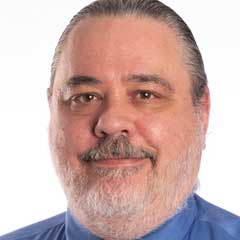
The delivery of inhaled medications is vital to the care of many children who require mechanical ventilation. Ineffective or inefficient techniques result in decreased quality of care. The presenter will discuss the different aspects that affect drug delivery in children receiving invasive mechanical ventilation, including the integration of current data.
4:30 p.m.–5:05 p.m. | Track: Ethics | CRCE: 0.58
David Wheeler, MEd, RRT, RRT-NPS, FAARC
Show description

We are living through an era we could not have anticipated in our wildest dreams. This discussion will focus on the ethical discernment necessary in the allocation of scarce medical resources, the moral distress that attends a pandemic and the ethical constraints of a polarized society. This discussion will highlight aspects of biomedical ethical thought. It will also explore a mental model of ethical action and discernment when confronted with the allocation of scarce medical resources, ethical decision-making and unheard-of circumstances, along with ways to counteract the effects of medical nihilism.
There are no sessions that match your display preferences.